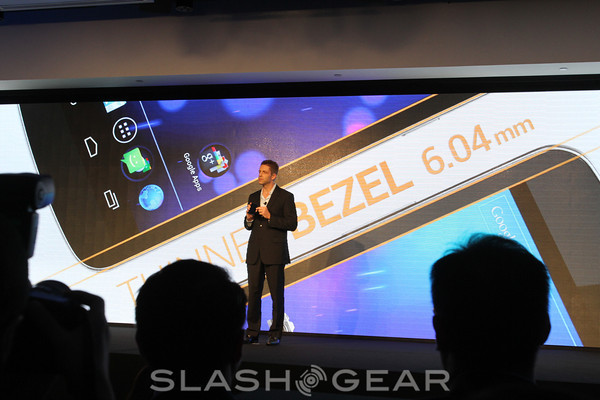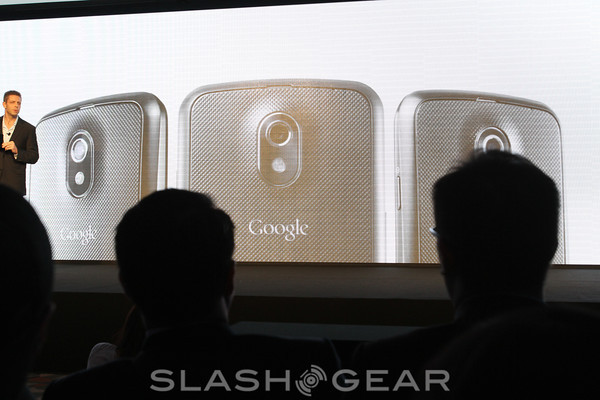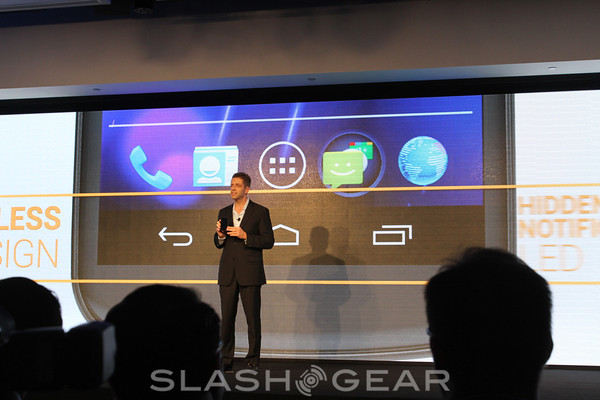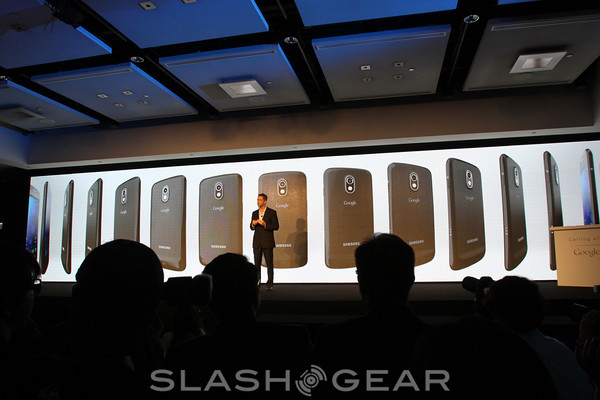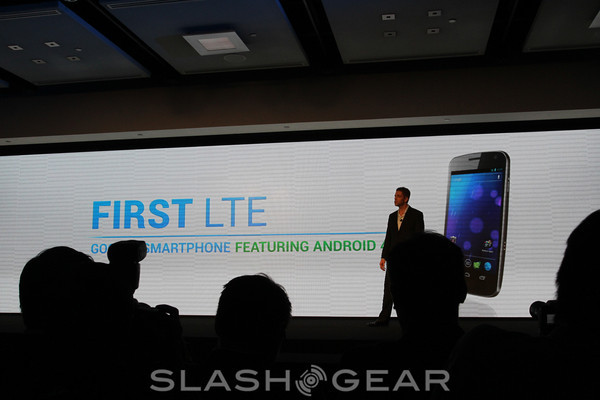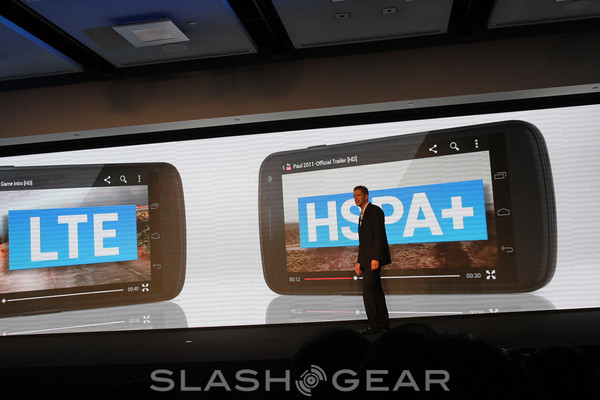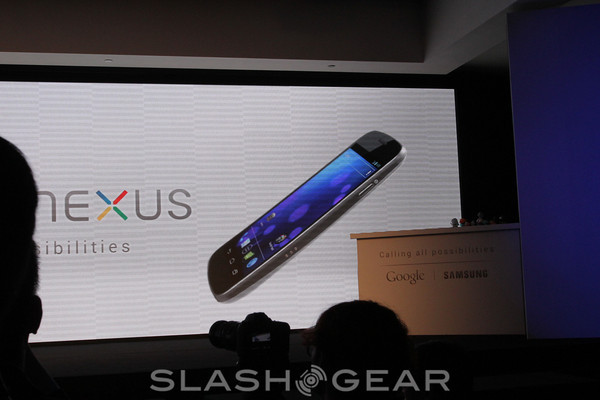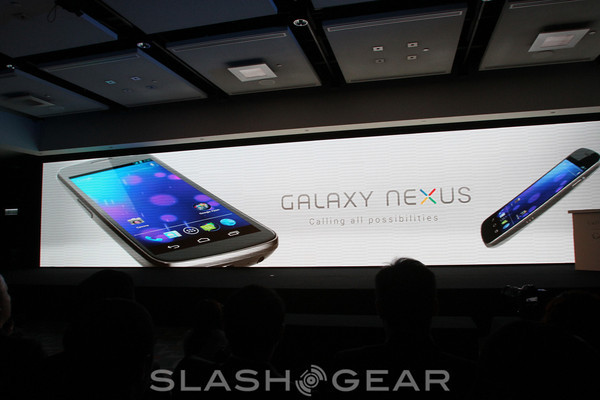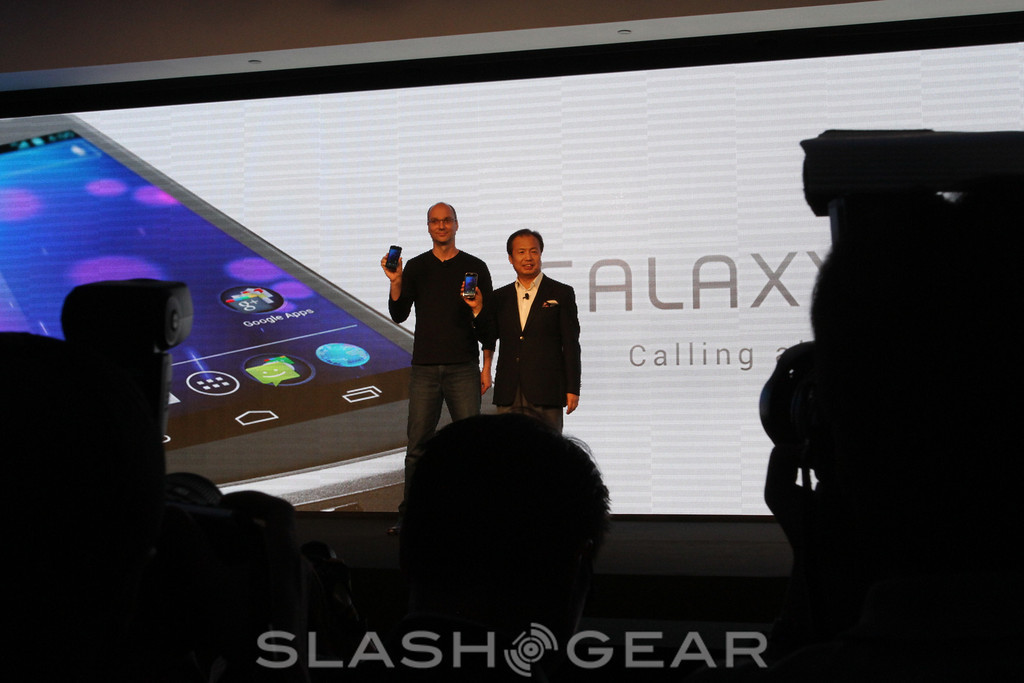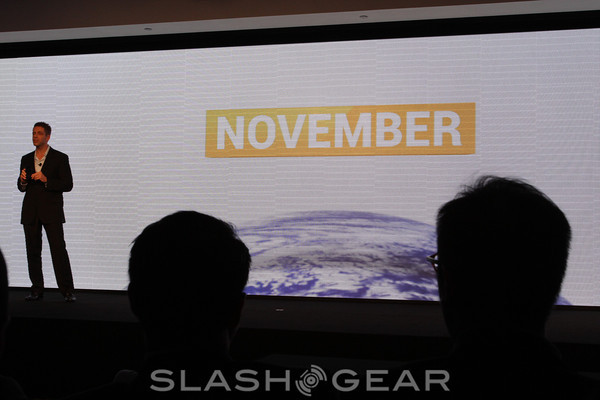Google Nexus Launch Date Revealed, Design Detailed
Kim Titus of Samsung started off the Galaxy Nexus event by introducing the head of Samsung Mobile Communications, JK Shin, who began the show with the announcement that they'd be releasing the world's first Ice Cream Sandwich device. This device would have their very popular Super AMOLED display brand, LTE connectivity, and Google+ integration right out of the box. This was of course the Samsung Galaxy Nexus. Shin handed the show off to Andy Rubin of Google who continued to illustrate the device and the ecosystem as one that can "do things you never thought of before."
Then came the video of the Galaxy Nexus, a short video showing off the device flying through the air, this complimented by Andy Rubin and JK Shin then stepping back onto the stage for a photo opportunity holding the device aloft. Kevin Packingham of Samsung was up next, there to speak about the innovation in the device.
Speed
The Galaxy Nexus will be launching in both LTE and HSPA+ versions, both of them with the same 1.2GHz processor (OMAP 4) which "just flies." Android 4.0 Ice Cream Sandwich will be able to "shine" in this new setup.
Screen
"The experience begins and ends with the screen." Super AMOLED will of course be standard here, with "the industry's highest contrast ratio", here in "HD Super AMOLED" flavoring. This newest device will have a 4.65-inch display at 1280 x 720 pixel resolution. Ice Cream Sandwich was designed, Packingham says, with 16:9 and 1280 x 720 pixel resolution in mind. There's a "0.01 ms response time" in this device, says Packingham, this resulting in great videos and speed throughout the device.
Design
Samsung's design legacy, says Packingham, is utilized here, especially in the contour display (the curve) with a soft, natural feel. The device is thin at 8.49 mm and has a 4.29 mm bezel around the edge. There's a new Hyperskin backing on the battery cover which makes the back "slip resistant" and there's an LED notification light below the display hidden under the black. The camera has the ability to use built-in stabilization and 1080p video capture. There's a built-in Barometer for weather, and the dock will be a simple drop-in design.
We'll see the rest soon!

